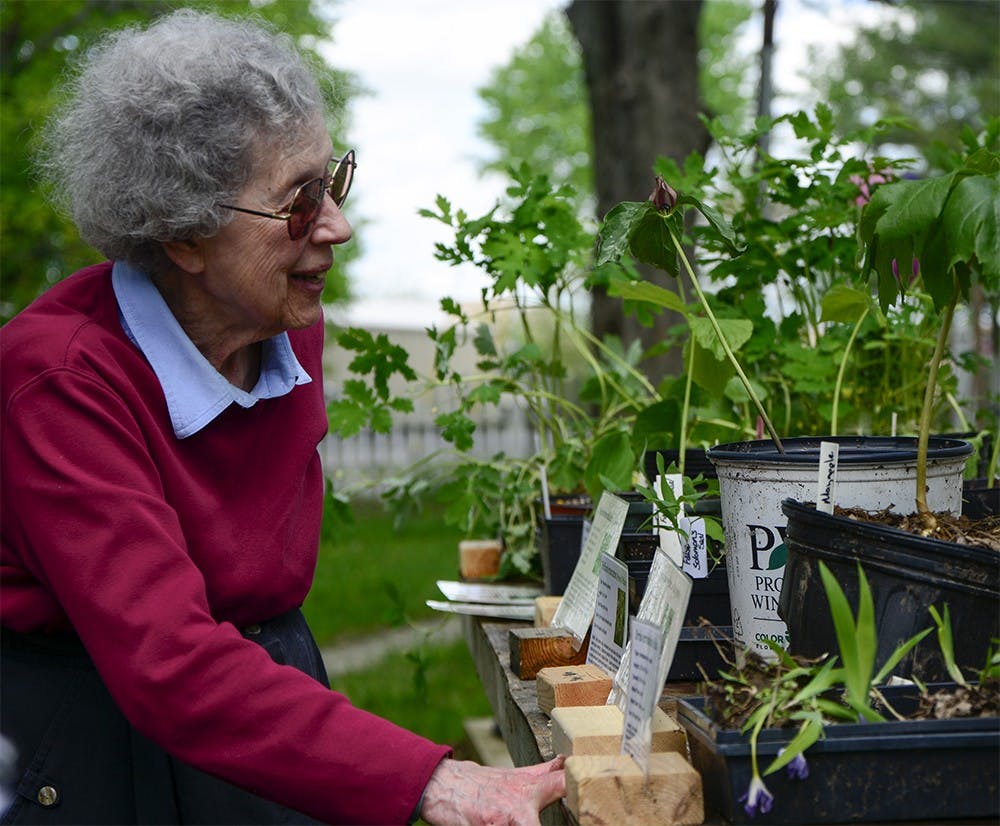Olivia Dorfman perused rows of wildflower plants at the Hinkle-Garton Farmstead’s native plant sale Sunday afternoon.
“I’m looking at a strip of grass between the sidewalk and the road,” she said. “I would like to make a butterfly garden and space for wildflowers there. I think it would be a nice place to have things for the birds and bees and other things.”
Because the strip of yard will be unshaded and dry, Dorfman, a Bloomington resident, chose from plants that would bequeath periwinkle asters and downy skullcap, lavender coneflowers and black-eyed susan, all flowers that were marked for spots in the sun.
“Why have a yard when you can have wildflowers?” she said.
Dorfman moved to Bloomington in November, she said, and she brought an appreciation of wild plants, as well as cultivated strains, from her home on a farm in New Jersey.
She’s recently begun tearing up invasive plants like honeysuckle in her yard, she said, and wants to refill the space with native flowers.
“You know, any little bit you are doing against the onslaught of habitat loss, it can help,” Dorfman said. “This is their home.”
Michael Bell, the grounds committee chair for the farmstead, touched the nodding seedheads of a Virginia bluebell.
The wildflower in question is set under a tree in the front yard of the Hinkle-Garton Farmstead.
Beneath the larger plant, tiny seedlings had begun to propagate in the soil.
“It’s a native woodland plant,” Bell said. “When you get a mass of this blooming at once, it’s a really beautiful thing.”
The sale, which took place over the weekend, offered cultivars of wild plants native to Indiana, so gardeners could place them in their own gardens, Bell said.
Donna Marcus, a local gardener, looked through pots that would eventually blossom into broad, yellow coreopsis.
After planting native shade-resistant plants in her garden, Marcus said a sunny area had opened up that she planned to fill with wildflowers.
“It just seems like a nice thing to have, something different from what you see in the garden store,” she said.
Bell said although buying plants from store nurseries is popular, there is a benefit to buying and planting local flowers.
“The human impulse is to bring in the exotic stuff because it’s different,” Bell said. “You don’t have an appreciation for the kind of mundane things that were always here. But the exotic things don’t have food for the birds and butterflies, or they aren’t as good for the local environment.”
To that end, the farmstead also offered milkweed, butterfly weed and other nectar-producing plants to attract and feed monarch butterflies, Bell said.
Proceeds from the sale went toward the farmstead’s gardening efforts, Bell said, like removing invasive plants and reinstating local strains on the restoration site.
Bell said most of the plants came from a wholesale supplier in Muncie, Indiana, with an interest in restoration of native plants.
“The plants are locally adapted to the conditions here,” Bell said. “They’re more likely to bloom at the appropriate times and do well in the soil in Indiana.”
Bell brought some samples of native wildflowers from his own garden, which he bought individually a while back and cultivated into multiple plants.
“That, to me, is the heart of planting,” Bell said. “You can start with the investment of a single plant and end up with a colony.”






